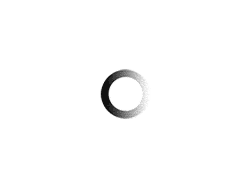Chemistry Demonstrations
Elephant Toothpaste (Elementary School Demo)
What you need:
- 12 oz plastic bottle
- hydrogen peroxide (3%)
- dish soap
- dry yeast
- warm water
- baking sheet
What to do:
- Prepare yeast solution by adding dry yeast to warm water and wait a few minutes until it becomes frothy.
- Pour 2 inches of hydrogen peroxide (3%) into the bottle.
- Place bottle on baking sheet.
- Squeeze in a good squirt of dish soap.
- Pour in yeast solution (3 tablespoons).
Chemical Principle: Catalysis
A catalyst is a chemical compound that speeds up the rate of a reaction.
Hydrogen peroxide (H2O2) is a reactive molecule that readily decomposes into water (H2O) and oxygen:
2H2O2 → 2H2O + O2(g)
In this experiment yeast is the catalyst causes decomposition and makes a big foamy mess!
Briggs-Rauscher Reaction – Yellow to Blue (College Demo)
What you need:
- 30% H2O2
- Soluble starch
- KIO3
- MnSO4•H2O
- Malonic acid
- Deionized water
- 1 M H2SO4
- Large beaker
- Graduated cylinders (3)
- Stir plate / stir bar
What to do:
1. Solution A: Prepare 100 mL of 9% H2O2 by diluting 30 mL of 30% H2O2
with 70 mL of deionized H2O.
2. Solution B: Prepare an acidified 0.2 M KIO3 solution by adding 10 mL of
1.0 M H2SO4 to 80 mL of deionized water. Dissolve 4.3 g KIO3 in this
solution and dilute to 100 mL.
3. Solution C: Prepare starch solution by dissolving 0.1 g of soluble starch in
90 mL of boiling deionized water. When cool, add 1.5 g malonic acid, 0.4
g MnSO4•H2O, stir and dilute to 100 mL.
4. Add 50 mL of Solution A to a clean beaker fitted with a stir bar. Next add
50 mL of Solution B and let solutions mix thoroughly. Once complete, add
50 mL of Solution C and let reaction stir. Upon addition of the final
solution, bubbles should appear. The solution will turn yellow then blue,
then colorless. This reaction will oscillate for 5-10 minutes.

